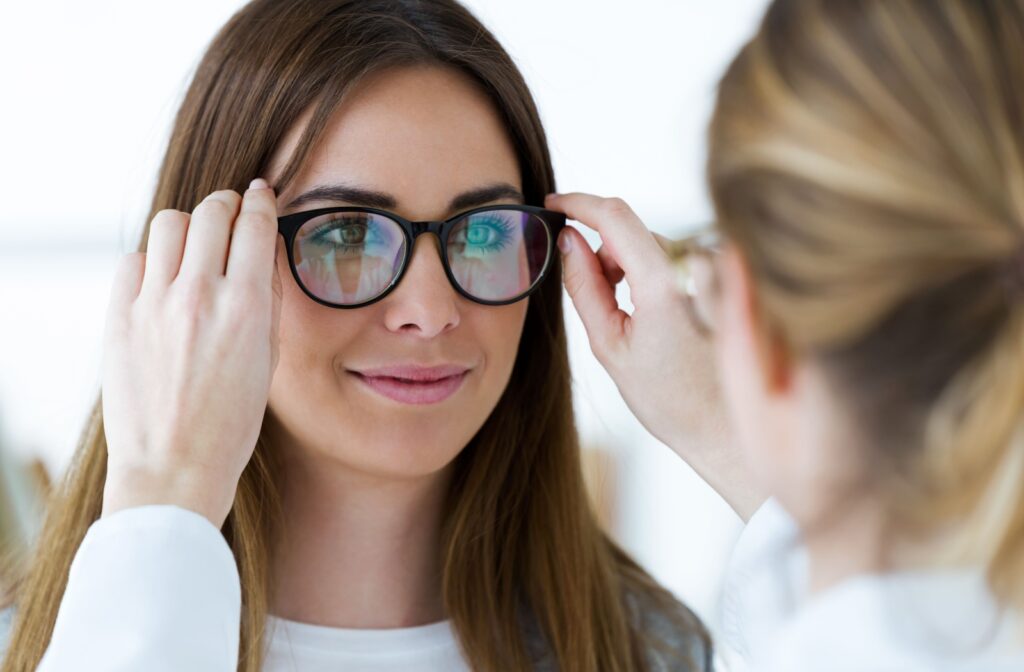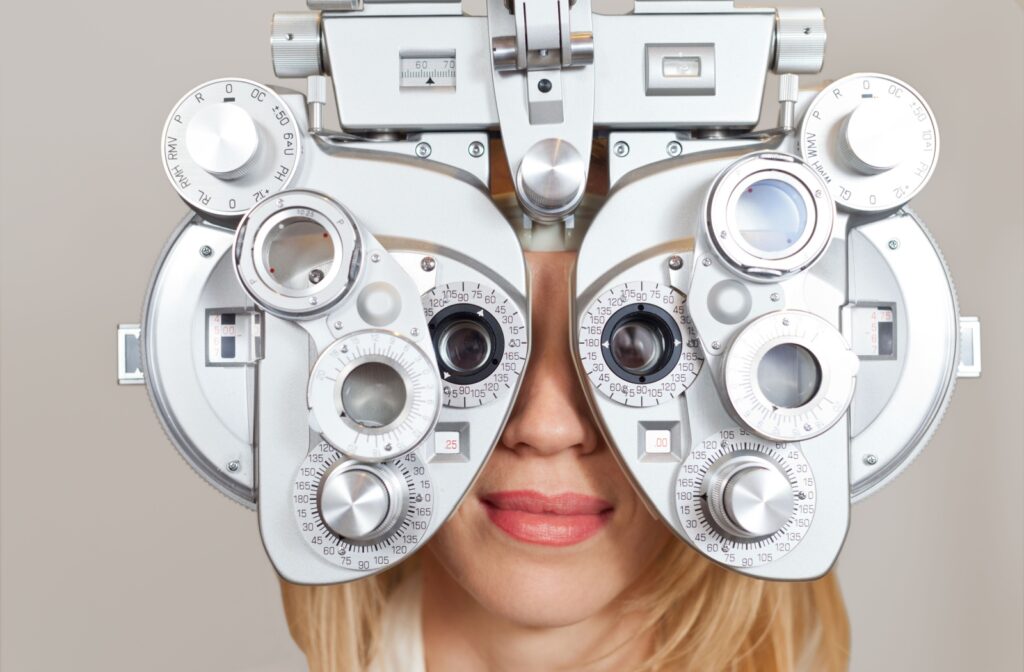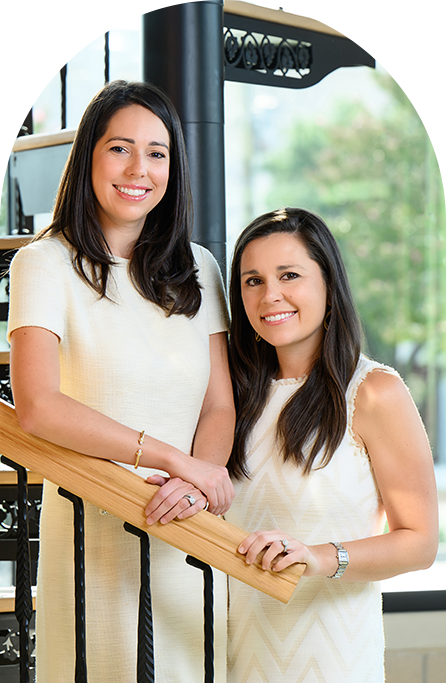Eye health is a critical part of overall wellness, but how much time should you typically carve out for an eye exam? Routine eye exams take roughly 30-60 minutes but can vary depending on your eyes and your specific needs. Exams for contacts will often take a little bit longer, averaging between an hour and 90 minutes.
What Can You Expect in an Eye Exam Timeline?
An eye exam is like a dental check-up for your vision. It’s a routine procedure that enables your eye doctor to keep an eye on your eye health. An average eye exam generally takes about 30 minutes, including pre-testing by a technician and the actual examination by the optometrist. The duration will vary a bit if you’re looking to get new glasses or want to explore contact lenses, especially as a first-time wearer.
Does It Hurt?
No, eye exams don’t hurt. A common misconception is that the process involves some form of pain or discomfort. You may have heard of the infamous eye-puff test for glaucoma screening. This test is the non-contact tonometry test (NCT), designed to measure the pressure in your eye. High eye pressure can be a risk factor for a sight-threatening disease called Glaucoma.
NCT is quick and painless, but it can be a little surprising. However, there are newer methods to screen for high eye pressure. There are a few methods an optometrist may use to screen for glaucoma, only NCT includes a puff of air. You can ask your optometrist’s office when booking your exam which equipment they use for glaucoma screening. Vision Veritas does NOT use the eye-puff test (NCT) method.
What Does an Eye Exam Entail?
A comprehensive eye exam is a thorough assessment of your vision and eye health.
The Tests:
Visual Acuity Testing
This is the chart-reading portion where the optometrist gauges the sharpness of your vision. You’ll call out letters from a distance, helping determine if you need corrective lenses.
Eye Muscle Movement Exam
This test involves following a target in various directions to check for muscle function, eye alignment, and disorders that might cause double vision or uncoordinated eye movements.
Pupil Dilation
Your optometrist may choose to dilate your pupils to get a better look inside your eye and check for signs of health issues like diabetes and high blood pressure. Dilating eye drops will be administered, they can sting a little initially like most eye drops, but any discomfort subsides very quickly. Dilation can last 4 to 6 hours. Dilation sun-shades are often provided by the optometrist to help with bright lights after being dilated.
What Happens If Glasses Are Needed?
If your exam indicates you need prescription lenses, you’ll then need to choose frames and have your eyes measured for the lenses.

Frame Selection
This step is the fun part. You’ll get to try on a variety of frames, take your time and enjoy the process! Frames come in different sizes from extra small (for children) to Large, you’ll want to aim for something that fits well and is comfortable. Expert opticians can help guide this process.
Lens Measurement
Next, your optometrist will measure the distance between your pupils, and measure for the correct fitting height for certain specialty lenses. These parameters will ensure your glasses are tailored to your vision needs.
Getting Your Glasses
Once the measuring is done, your frame selection, prescription, and measurements are often sent to a lab to be made. They would be sent back to your optometrist’s office for pick up when they’re ready. Your optometrist will likely do a fitting when you pick them up, to make sure they fit securely around your ears and nose and are comfortable. A lot of optometrist offices also cut and edge lenses in-house for quicker turnaround times.
It may take 1-2 weeks to adjust to a new prescription (especially if you are trying bifocals for the first time), so don’t be alarmed if things feel a bit strange. If your eyes still haven’t adjusted after 1-2 weeks, it is recommended to go back into your optometrist’s office to investigate the cause.
What if Contacts Are the Way to Go?
If you prefer contacts, your eye exam may need to include a few more steps. Contact lens exams are slightly more detailed to ensure a proper fit and to teach you proper insertion, removal, and care.
Contact lenses need to fit your eye shape, size, and curvature to correct your vision accurately. This may require additional measurements and fine-tuning. Your optometrist will teach you the right way to handle your lenses. Don’t worry if it takes a few tries; it’s all part of the learning curve.
Next Steps
An eye exam is about maintaining eye health and it’s a routine part of personal care, like going to the dentist or getting an annual check-up. Regular eye exams can catch vision changes and help detect underlying health issues that may require further care.
Get the whole family involved early. Regular eye check-ups for children can be pivotal in catching developmental concerns that early intervention can address. Our team at Vision Veritas Eyecare is dedicated to providing thorough exams for families, children, and seniors. Schedule an appointment for an eye exam today.





